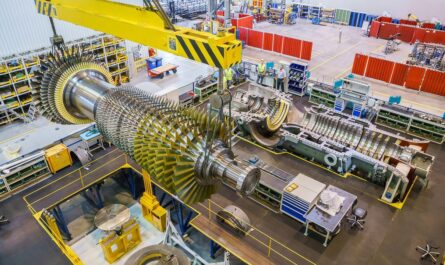Biomass refers to organic material that comes from plants and animals. Biogas solid fuel is a type of fuel produced from biomass. It is a renewable energy source as it is derived from organic matter that replenishes itself quickly through natural processes like plant growth. Common types of Biogas solid fuel include wood pellets, wood chips,Logging residues and agricultural byproducts like straw.
Sources of Biomass Solid Fuel
– Wood and plant matter: Wood pellets, wood chips, logs and firewood are commonly used Biogas solid fuels derived from wood and plant matter. Wood pellets are made by compressing wood residues like sawdust into dense cylindrical pellets.
– Agricultural residues: Agricultural byproducts like corn cobs, nut shells, straw and manure can also be processed into Biomass Solid Fuel. Countries with large agricultural sectors have an abundant supply of agricultural residues available for fuel production.
– Energy crops: High-biomass energy crops like miscanthus, switchgrass and short rotation coppice trees can be grown specifically for fuel production. These fast-growing crops require less inputs than food crops and can be grown on marginal lands.
– Municipal solid waste: Combustible components of municipal solid waste like paper, wood, food and yard waste can be extracted and converted into a Biogas solid fuel through various waste-to-energy technologies.
– Logging residues: Logging residues from timber harvesting operations like tree tops, branches and scrap wood piled during logging can be collected and processed into pellets or chips.
Production Process of Biogas solid fuel
The production process of Biogas solid fuel usually involves collection of biomass feedstocks, preprocessing, drying, size reduction and densification.
– Collection and preprocessing: Biomass materials are collected from sources and undergo initial processing like sorting, grinding and chipping to prepare them for further treatment.
– Drying: Moisture is removed from the biomass through drying as high moisture content hinders further processing and impacts the fuel quality. Drying is done using technologies like kilns, rotary dryers or windrow drying.
– Size reduction: Overly large biomass pieces are broken down into uniform sizes suitable for downstream processing through hammer mills, roller mills or shredders.
– Densification: The preprocessed and dried biomass is compressed under high pressure and temperature into densified solid fuels like pellets or briquettes using pellet mills or briquetting machines. This increases the energy density and eases transport and storage.
Properties and Applications of Biogas solid fuel
– High energy density: Biomass Solid Fuel have high energy density compared to raw biomass materials, making transport and storage more efficient. Wood pellets have energy density of 4-5 kWh/kg.
– Clean burning: Biogas solid fuels produce less ash and burn more cleanly compared to raw biomass or fossil fuels, resulting in less pollutant emissions. The fuels have uniform quality.
– Versatile applications: Biogas solid fuels find applications in power generation, district heating, commercial & industrial heating depending on the scale. Large pellet mills and power plants use biomass fuels while households use bags of pellets for home heating.
– Grid stability: Biomass power helps stabilize the electric grid as its operations can be easily adjusted to meet fluctuations in renewable energy from solar and wind. The fuel supplies are also more reliable.
– Carbon neutral: Biogas solid fuels are considered carbon neutral since the CO2 released during combustion is equal to CO2 absorbed by plants during growth through photosynthesis.
Advantages of Biogas solid fuel
– Renewable source: Biogas solid fuels are derived from renewable organic matter and do not deplete finite fossil fuel reserves. Sustainable production is possible.
– Rural development: Biomass fuel production creates jobs and economic opportunities in rural areas for collection, processing and transport. It promotes rural industrialization.
– Waste utilization: Byproducts and wastes from forestry, agriculture and municipalities are valorized into useful solid fuels instead of becoming a management problem.
– Energy security: Reliance on domestic biomass resources reduces dependence on imported fossil fuels and enhances energy security of a nation. Supply chains are local.
– Carbon management: Biogas solid fuels play a role in mitigating climate change by absorbing atmospheric carbon during plant growth and long-term carbon storage in products like biochar.
Challenges to Adoption of Biogas solid fuel
– High production costs: Collection, preprocessing and densification processes involved make Biogas solid fuels more expensive compared to fossil fuels currently. Economies of scale are needed.
– Logistical issues: Effective coordination is required between dispersed biomass producers and fuel processing facilities for smooth biomass supply. Transportation infrastructure needs improvement in some places.
– Limited availability: Sustainable biomass potential depends on land availability and natural resource limits. Competition with food production needs balancing.
– Seasonality of supply: Collection of agricultural residues depends on harvesting seasons, affecting year-round supply for baseload operations. Strategic reserves are required.
– Lack of policies: Favorable government policies promoting biomass production, processing investments and market creation are required to scale up the industry. Carbon pricing can help.
With the urgency to switch to renewable energy and gradually phase out fossil fuels for climate mitigation, Biogas solid fuels offer an important option. Continuous R&D to enhance production efficiencies, develop advanced conversion technologies and mainstream biomass heating applications can help realize their vast potential as a sustainable energy source. With focused efforts on overcoming challenges, Biogas solid fuels have scope to significantly contribute towards nations’ green energy goals in the future.
*Note:
1. Source: Coherent Market Insights, Public sources, Desk research
2. We have leveraged AI tools to mine information and compile it


